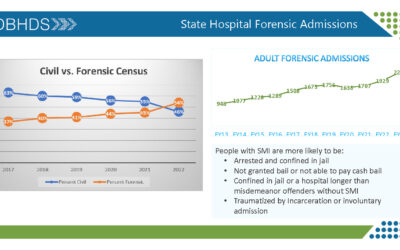By Carly Ward, MSW Intern
Virginia’s school children are experiencing unprecedented mental health challenges. To help address this need, the Virginia Senate just adopted a budget amendment from Senator Jennifer McClellan to fund a school-based mental health integration program. The proposal, if agreed to by the House of Delegates, would go into effect during the 2023 and 2024 fiscal school year. It would provide $10,000,000 over two years to DBHDS (Department of Behavioral Health and Developmental Services) and partners to aid school divisions in Virginia. The assistance would allow both public and private community-based providers to make much needed mental health services available for students. These funds could potentially enhance the school’s ability to provide services and programming to students that may have originally been beyond the scope of the school-based personnel. So, what’s the catch?
When looking at the potential impact of these funds, it is impressive to imagine how many doors can be opened with that kind of money; however, this is a set amount allocated to the whole state, meaning that not every school in the state can benefit from it, nor may some even see it. In order to obtain a portion of the money, schools must show a need for it, as well as the services it is going to potentially provide. Schools can apply through the grant process, showing where there is a deficit and potential need for services. Unfortunately, the need for services can arguably be more applicable in higher grades, such as middle or high school, so it could potentially lead to elementary schools being left out or forgotten about until later on in the process. Hopefully, the end goal would be to show that these services are warranted, eventually leading to more funds being set aside for these types of programs. The more money, the more opportunity for a larger number of schools to participate.
The idea of creating funds that allow schools to partner with outside based mental health organizations within the community makes it possible for more mental health services to be integrated into the schools. However, the limited amount also creates challenges when it comes to deciding who has the greatest need for the services. Over the course of the two-year period that funds would be available, it is vital that outcomes be measured to demonstrate the value to children of providing the services. This would potentially support advocacy to continue funding this approach to support children’s mental health, and to expand services to children in elementary schools.



